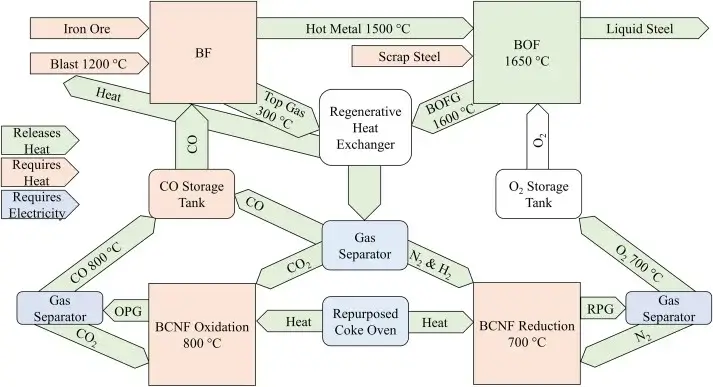The steel industry is a major source of greenhouse gases, accounting for 9% of global emissions. This is due to the carbon-intensive nature of steel production in blast furnaces, which is currently the most widely used practice. In steelmaking for blast furnaces, coke (a type of coal) is used to produce metallic iron from ore from mining, which releases large amounts of carbon dioxide. According to Dr. Harriet Kildal, who developed the method with Professor Yulong Ding, their technology aims to convert this carbon dioxide into carbon monoxide, which can be reused in the iron ore reaction.
This is done through a thermochemical cycle, which performs chemical reactions through temperature changes. Thus, normally harmful CO2 is converted into a useful part of the reaction, forming a "nearly perfect closed carbon loop". This drastically reduces emissions at the expense of the amount of coke required and therefore reduces emissions in steel production by up to 88%. If the technique were implemented at the remaining two blast furnaces in the UK, the technique could save £1.28 billion over 5 years, while reducing the country's overall emissions by 2.9%, the researchers say.
“Current proposals to decarburize the steel sector are based on phasing out existing plants and introducing electric arc furnaces powered by renewable electricity. However, the construction of an electric steel plant could cost over £1 billion, making this transition not economically viable for the remainder of the time. to implement the Paris climate agreement,” said Professor Dean. “The system we propose can be retrofitted to existing plants, reducing the risk of losing assets, and the reduction in CO2 emissions and cost savings are immediately visible.”
The study was published in Cleaner Production.




